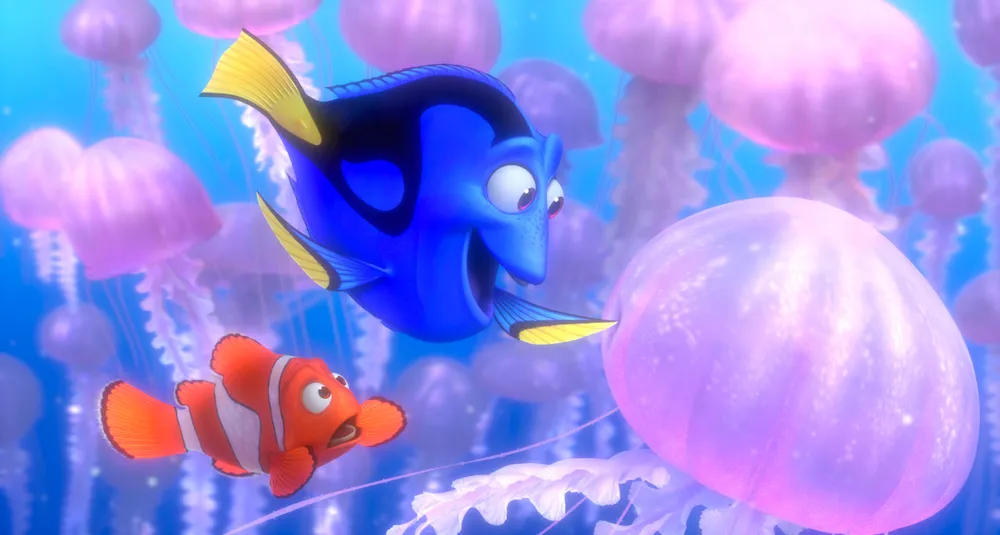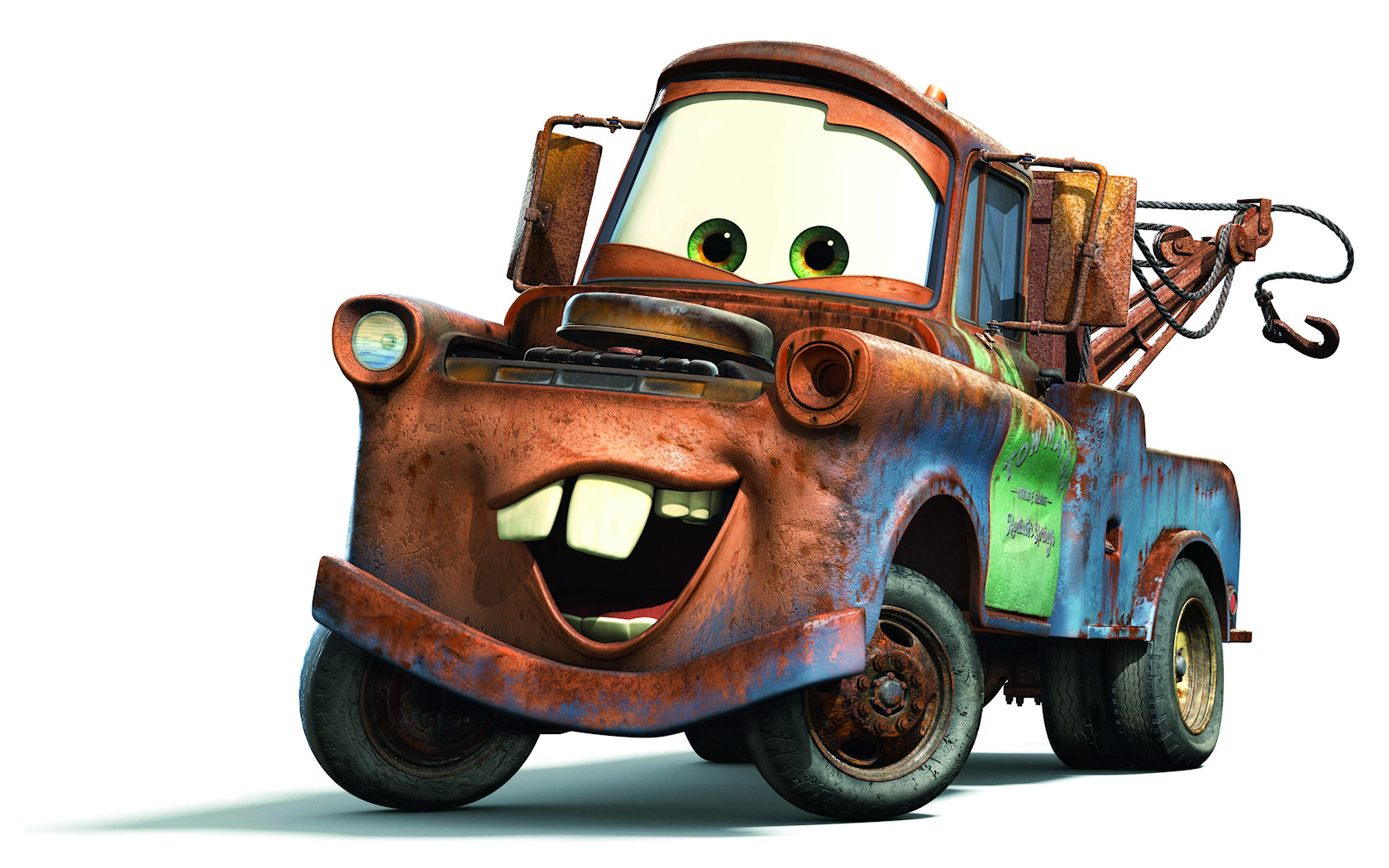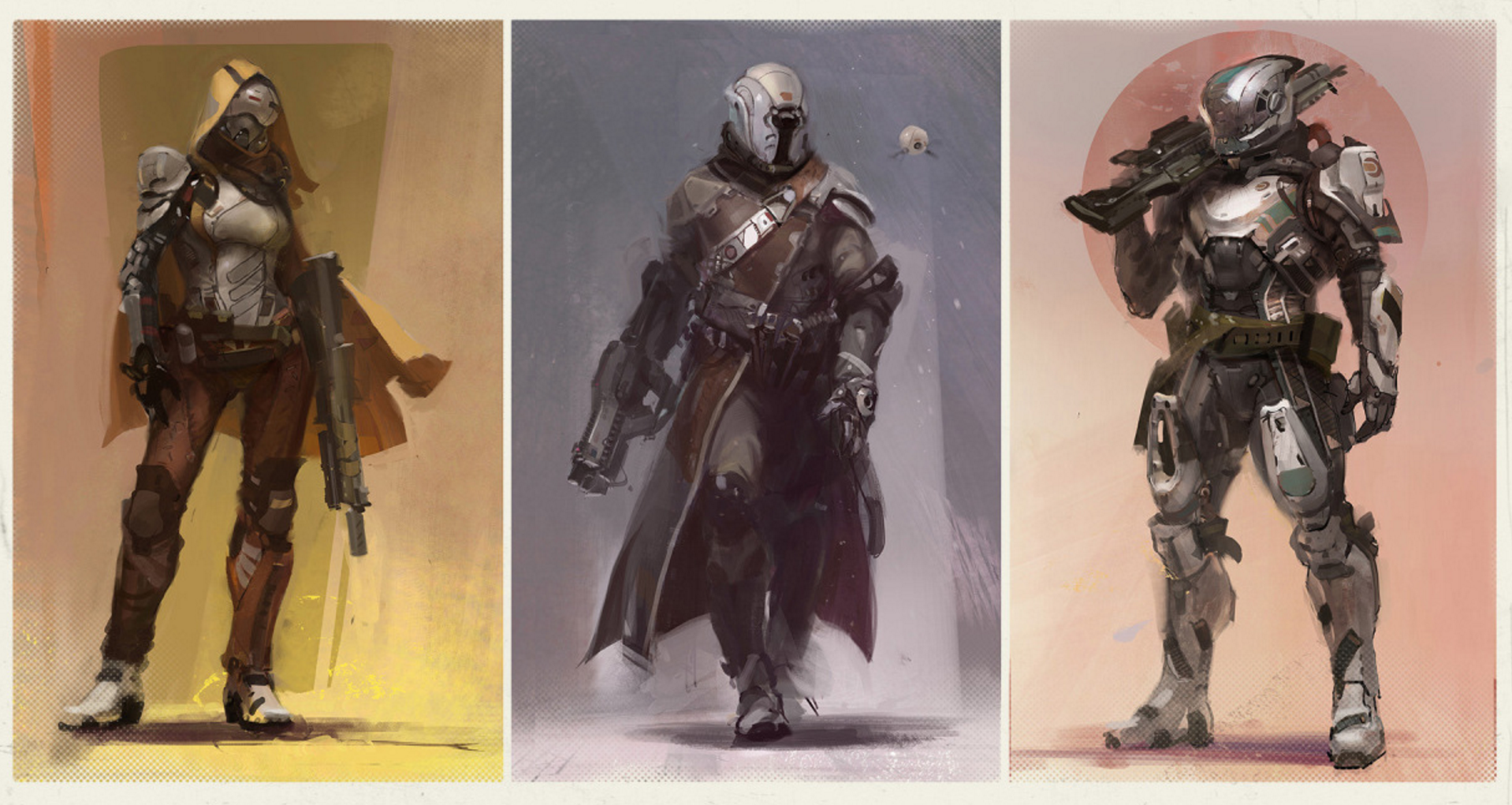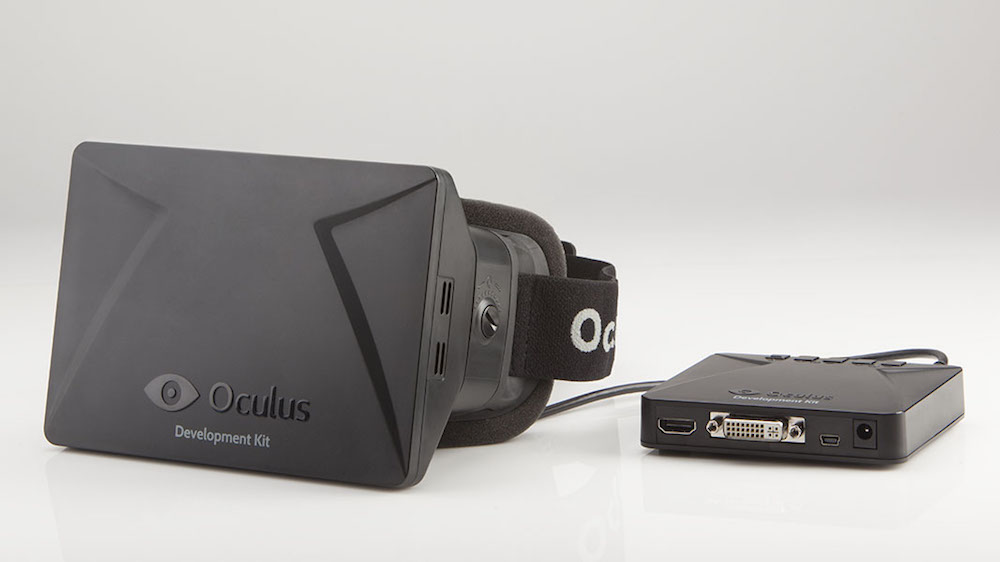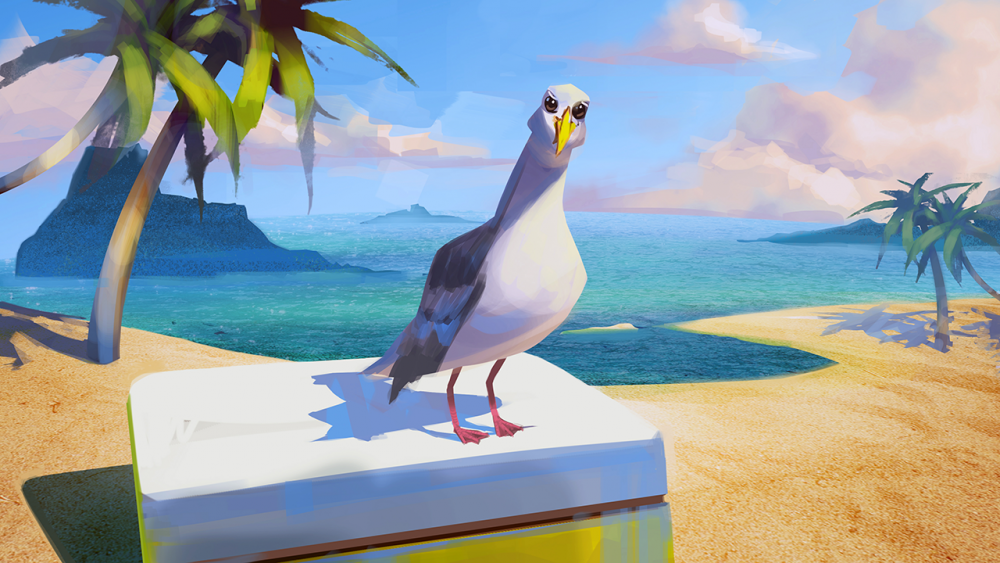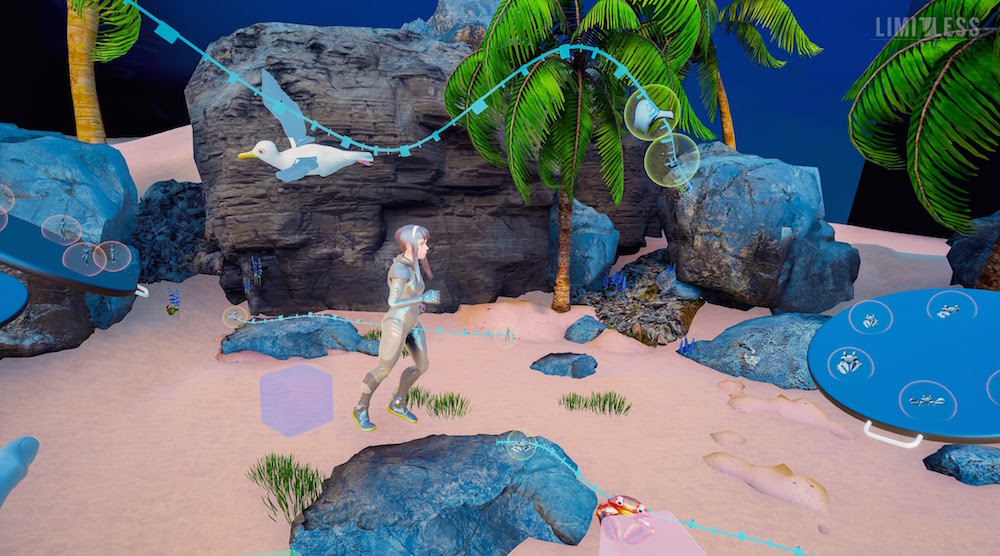Today, a company called Limitless is announcing a suite of virtual reality animation tools that could revolutionize the way immersive films are created. This is the story of how they got there.
–
Tom Sanocki was falling in love.
The object of his affection was not the waitress at the coffee shop, or the new girl from accounts payable. Instead, Sanocki’s heart was being captured by an army of deadly Jellyfish that would one day attack two hapless fish on their quest across the ocean to rescue a missing son.
His SGI Irix desktop whirred impatiently under the strain he was putting it through, but the deadline was approaching too fast to be cautious. The dark offices were bathed in the soft blues and greens of the ocean emanating from his workstation, but one could still just make out the letters above the door: P-I-X-A-R.
Sanocki might have been working late, but despite this project’s long hours, difficult workload and a never-ending stream of technical puzzles to unravel, he had never been happier.
Sanocki smiled victoriously as he watched the tendrils of the jellyfish before him undulating in the exact manner he hoped they would. Months of work were finally beginning to pay off and his grin widened even more at the thought of showing this to Andrew in the morning.
With a satisfied yawn Sanocki stretched and looked around the room that now resembled a large indoor aquarium one last time for the night. He was exhausted, but his smile never wavered. Just as he was about to get up and leave he noticed a small imperfection in the movement of one of the jellyfish. Rather than cursing and smacking the monitors, Sanocki felt a leap of excitement at the prospect of a fresh challenge. He leaned forward enthusiastically and got back to work. Because, in the end, Tom Sanocki is a man that loves one thing more than any other: solving problems.
From Princeton To Mater
Before he would ever become a character artist for Pixar’s Finding Nemo, Sanocki first had to make his bones in computer science at Princeton in the mid-90s.
He attended the prestigious university in the hopes of enrolling in the computer graphics program of a professor he respected. However, just a few months after his enrollment, that professor left the Ivy League to pursue his craft elsewhere.
This left Sanocki in somewhat of the lurch, but he did the best he could to support his passions through other means. By auditing a few animation classes and cracking (more than) a few books on the subject of computer science, he was able to scrape together a couple of clever short films and form the beginnings of an artistic portfolio.
Upon graduation, Sanocki received word from a few friends that their company, Pixar, was going through a hiring spurt and that he should seriously consider applying. And so, armed with his newly finished portfolio, Sanocki landed his first computer graphics job at a company already considered to be on the bleeding edge of his field.
Three months and a second graduation later, Sanocki passed the Pixar University training program and requested a posting in the characters department. He had found, through his months of study at the company, that characters would offer him both the artistic and technical challenges he desired for his fledgling career. He was assigned to a young director named Andrew Stanton and set to work on the militia of jellyfish that would one day stop America’s collective hearts in the movie theater.
Sanocki found an instant delight in his work at Pixar because, as he puts it, “we were making everything up as we went along, there was never a shortage of problems to solve and we were inventing most of the solutions. We were building stuff that simply didn’t work…until it did.”
After completely rebuilding the character pipeline process and solving the cloth-modeling problems for the jellyfish, Sanocki had helped create one of Finding Nemo‘s most memorable scenes. After that, he found himself taking lead roles on characters for several of Pixar’s greatest hits.
He worked on the problem of quadruped movement for Ratatouille, helped build a new hair simulation engine for the flowing crimson locks of princess Merida in Brave, but his biggest claim to fame came in the form of a rusted old pickup truck named after a fruit.
Mater (short for Tow-Mater), the busted down country pickup from Pixar’s Cars, is the closest thing to a digital son Sanocki created while at the studio. He wrestled with the complexities of animating an automobile with enough personality to seem human, and he designed every pixel to carefully add personality to the fast talking, slow driving lovable simpleton.
Today, Mater can be found on millions of lunch boxes, toy boxes, posters and other entries in Pixar’s merchandise machine. Over time, though, Sanocki, was finding himself with fewer and fewer chances to do what he loved at Pixar.
Manifest Destiny
As the decade turned over Sanocki was starting to lose interest in his work at Pixar. The studio had been so successful at solving complex problems in its heyday that there were now very few left with which he could wrestle. The company was shifting toward sequels, and other properties that simply didn’t require as much creative muscle to produce. The systems were already in place which meant that it was time for Sanocki to find a new challenge.
Having nearly 10 years of experience at Pixar opened more than a few doors as Sanocki began his search for a new position. He fielded a few attractive offers but there was one that captured his attention more than any other: Bungie.
The legendary video game studio had recently lost its most famous IP, the Halo series, due to a round of corporate maneuvering with Microsoft. However, rumor had it that the ambitious group was working on something even more impressive — something the gaming world had never seen before.
The promise of uncharted territory was enough to get Sanocki on board and so he joined Bungie as its character design lead only a week after leaving Pixar. The project he began working on would eventually become the monstrously successful sci-fi MMO known as Destiny.
At Bungie, Sanocki helped devise a system in which a multitude of custom character varietals could be created by players without sacrificing the performance or consistency of the game. His work paid off handsomely and he stayed with Bungie for several years as Destiny released and began making millions through software sales and downloadable expansion packs.
However, once the game found its footing Sanocki began to feel that same old itch to move on and find more challenges to solve. His true love was calling and he wanted desperately to answer. His phone eventually rang and on the other end was a man that would change his life forever.
When The Future Came Calling
The voice on the other end of Sanocki’s reciever was one that he recognized well. It belonged to Max Planck, a 10-year veteran of Pixar and one of Sanocki’s oldest colleagues. Planck was calling to see if his old friend would be interested in trying out his newest toy: a prototype virtual reality headset being hocked through Kickstarter. They were calling it the Oculus Rift, and Planck had managed to score a Developer Kit 1, or DK1 for short, through a generous donation to the online fund.
Sanocki, ever-eager to be a part of something new, met up with his friend and strapped on the headset. His initial reaction was that this thing was absolutely making him sick, the resolution was terrible, and he had never been more impressed. In that moment Sanocki was convinced he was looking into the future and he removed the headset to find his old friend grinning back at him.
Planck wanted Sanocki to join a VR animation company to do for this new medium what they did at Pixar: build things that could never work…until they did. Sanocki thought seriously about the offer but had to decline due to his obligation with Bungie. He felt he couldn’t simply leave in the middle of a development cycle, but a seed was planted in his mind and he could never quite manage to shake the wonder he experienced while strapped into that DK1.
A few years passed in which Planck ended up going to work with Oculus himself and forming what we now know as Oculus Story Studios. Sanocki, as well, found the seed in his head had matured into a full blown flower of an idea, and he was finally ready to make the jump.
Startups and Seagulls
In April of 2015 Sanocki left Bungie feeling that familiar desire to solve something new. This time it was not a swarm of deadly undersea predators, the bouncing curls of a Scottish princess, or the rusty bolts of a lovable pickup truck that had stolen his affections. This time it was not a character at all. This time it was a possibility.
Sanocki is now the CEO and founder of Limitless Ltd. (a small joke he takes infinite delight in), a company that is committed to pioneering the future of animation. The studio’s first real product of note was a short VR film titled Gary The Gull. Gary is about seven minutes long and features a fast talking seagull and his crab sidekick’s attempts to steal your lunch as you relax on the beach.
What’s unique about the project is that it is interactive. Gary responds to your words, your gaze, and the motions of your head throughout the experience. This ability to turn audience from passive observers to active participants in a film is what has truly enraptured Sanocki’s imagination these days and, fortunately for a man like him, it comes with plenty of new problems to solve.
The Toys Are Alive
Tom Sanocki fell in love almost twenty years ago and now he wants to give others the chance to do the same. He is attempting to solve many of VR animation’s problems, and empower aspiring artists, through the release of Limitless’ latest product: the Creative Environment. This is a cloud-based suite of animation tools that harness the unique capabilities of VR to accomplish days-worth of animation work in minutes.
For example, a demo version of the suite lets you play around with Gary and pals in the HTC Vive headset. By grabbing Gary and holding down the grip button on your controller you can move him in a recorded animation path that is then sent to the cloud and stored. By placing an “animation bubble” on this floating blue flight path you can make Gary flap, squawk, or stop to your heart’s content.
According to Sanocki, even something as simple as getting a crab to scuffle along the ground a few feet represents perhaps eight hours of a traditional animator’s time. With Limitless’ creative suite it happens in seconds.
“Everybody remembers being a kit playing with their toys, picking them up and taking them through one crazy adventure after the next,” Sanocki explains. “We wanted to translate that familiar experience into a set of tools that make animation both fun and easy in virtual reality.”
In addition to the pre-set assets, artists can upload their own creations into the creative suite to start building their own stories immediately. More features and animations will be added over time, but for now that excited gleam is back in the eye of a man who has imagined new worlds and built beautiful systems to create those worlds for much of his adult life.
Limitless and Pixar have a lot in common in that they both began as sets of computer animation tools that only made films to prove that their concepts were effective. Pixar started off releasing wire framed, half finished short films about bumblebees just to show its ideas were valid, and ultimately it transformed into the juggernaut it is today. Sanocki says he is more focused on creating amazing systems for animation than producing animated features themselves, but he admits that the possibility for a similar evolution certainly exists.
The Limitless VR creative environment is currently entering a closed testing period. Animators can email the company to request a space, although access will only be given to a select few. A wider release is planned in the next three to six months.
Today, all that matters to the man that once battled a small blue fish with an armada of perfectly swaying jellyfish is making sure that anyone that wants to create can do so with ease.

